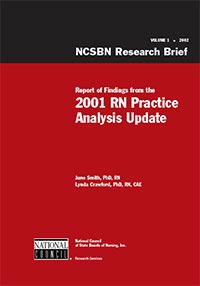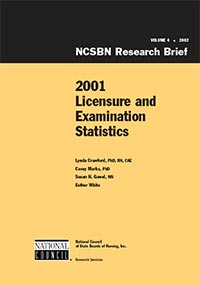Resource Center

Report of Findings from the Practice and Professional Issues Survey (Vol. 2)
The purpose of this study is discovery of any potential differences between the entry-level practices of graduates of associate degree and baccalaureate degree RN educational programs (© 2002).
2002 | Research Item

2001 Nurse Licensee Volume and NCLEX Examination Statistics (Vol. 4)
This annual publication provides national and state summary data of Member Boards’ licensure activities, as well as data on candidate performance on the NCLEX-RN and NCLEX-PN examinations. (© 2002)
2002 | Publications

Three Response Types for Broadening the Conception of Mathematical Problem Solving in Computerized Adaptive Tests
Presented at NCME
1998 | Research Item

Stability of Item Calibrations for the NCLEX-RN and NCLEX-PN Using Computerized Adaptive Testing
Presented at AERA
1996 | Research Item

The Effect of Restricting Ability Distributions in the Estimation of the Item Difficulties: Implications for a CAT Implementation
Presented at NCME
1994 | Research Item

Ability Measure Equivalence of Computerized Adaptive and Paper and Pencil Tests: A Research Synthesis
Presented at AERA
1992 | Research Item

Simulating Adaptive Administration of a Nursing Licensure Examination
Presented at AERA
1987 | Research Item

2025 NCSBN Awards Promo Video: British Columbia College of Nurses and Midwives
2025 | Video
